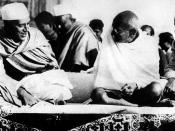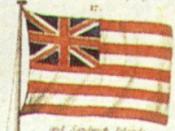Laws are enacted by a Parliament consisting of two chambers--the popularly elected Lok Sabha, or House of the People, with not more than 545 members and the Rajya Sabha, or Council of States, with not more than 250 indirectly elected members. The Prime Minister is elected by the majority party or coalition in Parliament and then formally appointed by the president. The appointed Council of Ministers, or cabinet, under the leadership of the Prime Minister exercises executive power. Elections to the Lok Sabha are held at least every five years; if there is a vote of no confidence in the Prime Minister's government, the president must call for new elections. The Supreme Court decides on the constitutionality of federal laws, handles disputes between the central government and the states or between the states themselves, and judges' appeals from lower courts.
The federal constitution includes a lengthy list of fundamental rights.
It guarantees freedom of speech and religion, among many other rights, and abolishes untouchability. It also specifies a set of Directive Principles of State Policy, designed to guide the government in the interests of the people. In periods of national emergency, which only the president can declare, the government may legally suspend certain rights for a limited period. Such an emergency was in force in India from June 1975 to March 1977.
In foreign affairs India tried to maintain a policy of nonalignment in the political rivalry between the United States and the Soviet Union during the Cold War. It supported independence movements in areas subject to colonial rule, opposed racism in South Africa and elsewhere, and championed the nations of the Third World in their economic dealings with the affluent countries of Europe, North America, and Japan. India has played a prominent role in the United Nations and in...


